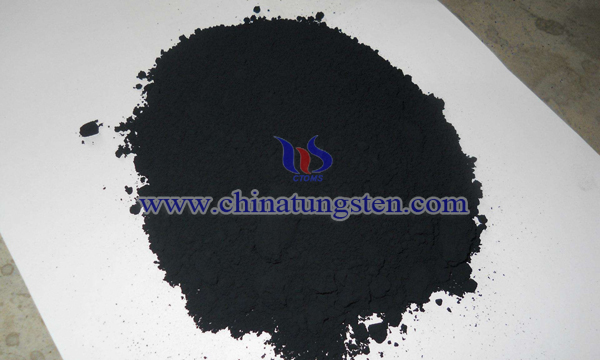Carbon Nanotube-Tungsten Carbide Composite Powder
- Details
- Category: Tungsten Information
- Published on Thursday, 02 August 2018 18:33
With the advent of nano-scale ceramic powders, related powder materials have also begun to be widely used as reinforcing phases of coatings. The use of nano-scale ceramic powder materials or carbon nanotubes helps to improve the mechanical properties of the coating, which has the effects of friction reduction and toughening have significant effects.

Studies have shown that the simultaneous use of carbon nanotubes and nano-tungsten carbide can significantly improve the strength and toughness of the layer. However, it is difficult to mix evenly the carbon nanotubes and nano-tungsten carbide. On the one hand, the physical properties and chemical properties of the two are very different, and the obtained coating structure is not uniform, thus seriously affecting the performance of the coating. Therefore, the preparation of a uniformly dispersed carbon nanotube-tungsten carbide composite powder material is the key to obtaining a coating with excellent lubricant properties.
In order to overcome the above problems, the researchers provide a highly dispersed carbon nanotube-tungsten carbide composite powder material preparation method. The main feature of the powder material is that the two are uniformly dispersed and are simultaneously prepared during the preparation process.
The preparation method of the nano composite powder material comprises the following steps:
1) Use a tungsten-containing compound and a cobalt, nickel and/or iron compound as a raw material, and preparing a nano-scale tungsten-cobalt, tungsten-nickel and/or tungsten-iron oxide powder by spray drying after liquid phase solvent compounding reaction; Or using the above raw materials to cause a precipitation reaction to obtain a homogeneous cobalt tungstate, nickel tungstate and/or iron tungstate powder;
2) Use the gas stream to bring the above-mentioned tungsten cobalt, tungsten nickel and/or tungsten iron oxide powder or cobalt tungstate, nickel tungstate and/or iron tungstate powder into a plasma chamber, a high temperature pyrolysis furnace, a rotary furnace or a boiling furnace, Hydrogen or argon gas and carbon source gas are introduced to carbonize nano tungsten oxide into nano tungsten carbide, and nano cobalt and nano nickel are reduced to nano cobalt and nano nickel. Under the catalytic action of nano cobalt and nano nickel, nanometer tube is prepared.
The specific implementation cases are as follows:
0.1 mol of ammonium tungstate and 0.1 mol of cobalt nitrate were respectively dissolved in 1 L of a 1 mol/L aqueous ammonia solution, and the two were mixed, and then atomized, and the spray dryer had an inlet temperature of 400 ° C and an outlet temperature of 180 ° C. The prepared oxide powder material is placed in a microwave plasma chamber, and hydrogen and methane are introduced, the microwave power is 500 W, the hydrogen flow rate is 50 cubic centimeters per minute under standard conditions, and the methane flow rate is 3 cubic centimeters per minute under standard conditions. The pressure in the chamber was 4 kPa, and the synthesis reaction time was 30 min. 33.8 g of carbon nanotube-tungsten carbide composite powder with uniform dispersion can be obtained, and the obtained powder material is agglomerates of nano-scale tungsten-cobalt, tungsten-nickel or tungsten-iron oxide powder, and has excellent lubricant properties.
- Tungsten Carbide Manufacturer & Supplier, Chinatungsten Online: tungsten-carbide.com.cn
- Tungsten News & Prices of China Tungsten Industry Association: www.ctia.com.cn
- Molybdenum News & Price: news.molybdenum.com.cn
- Tel.: 86 592 5129696; Fax: 86 592 5129797; Email: sales@chinatungsten.com



 sales@chinatungsten.com
sales@chinatungsten.com